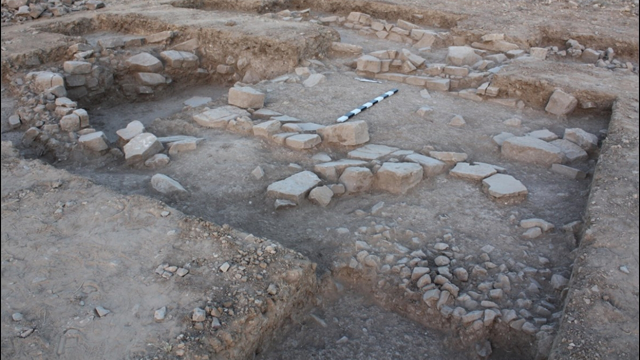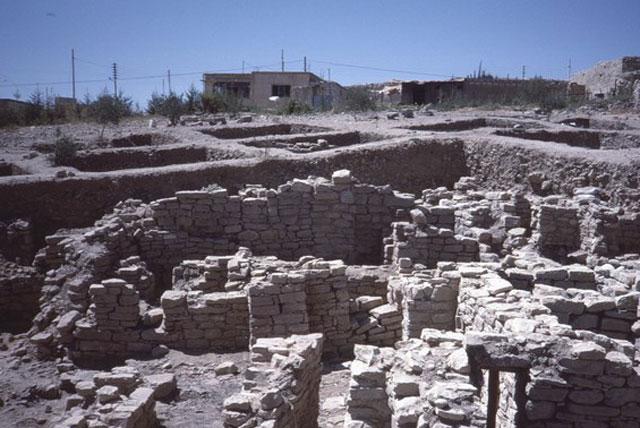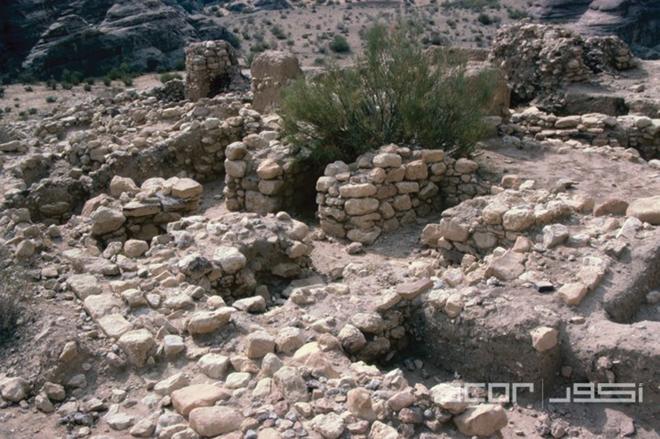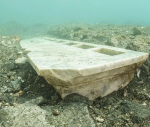You are here
Shift from gathering to farming in ancient Khayran
By Saeb Rawashdeh - Oct 05,2024 - Last updated at Oct 05,2024
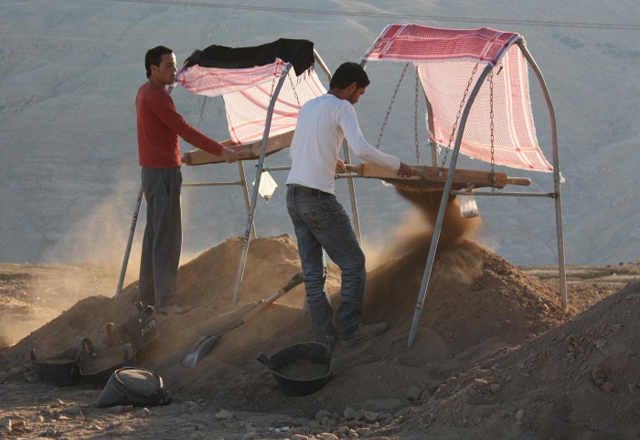
Team members Riad and Fadi Garaleh screen the excavated dirt from Al Khayran for artifacts (Photo courtesy of Matthew Kroot)
AMMAN — Located near the Lisan Peninsula, in the southern part of the Dead Sea shore, Khayran dates to about 10,000 years ago in a time period known as the Middle Pre-Pottery Neolithic B.
"We know that this was the first time that at least some communities in Jordan got most of their food from farming rather than gathering plants and hunting animals," said professor Matthew Kroot from Arizona State University in Arizona,
He added that the results of his work at Khayran showed that a single household likely owned the land on which the site is located.
"This land seems to have been a farm for producing grain, like wheat or barley," said Kroot who teaches Human Evolution and Social Change and directed archaeological fieldwork in Jordan, Senegal, and the states of California and Arizona in the US.
Kroot's research in Jordan focuses on the Neolithic time period and studies how the development of the earliest farming communities in the world, during a time period known as the Pre-Pottery Neolithic in Jordan, changed how people related to each other economically.
"In my laboratory, I analyse stone tools from around the world," Kroot said.
Additionally, the people who live at Khayran likely lived there for only a portion of the year and probably spent the rest of the year in a large village community with multiple households and families, the scholar elaborated, adding that scholars call such sites agricultural field houses.
"This is a big change from the time period that comes before the Middle Pre-Pottery Neolithic B known as the Pre-Pottery Neolithic A in Jordan," Kroot continued,
The professor added that there are a pair of sites in Jordan from the Pre-Pottery Neolithic A known as Dhra' and Wadi Faynan 16 where food seems to be owned by the community as a whole or a group of households.
In these villages, it seems that people were starting to farm, but that they still got a lot of their food from gathering wild plants and hunting wild animals.
Regarding preserved structures at the site, Kroot said that some of them are preserved and that there was one house at the site for a single family to live in for a portion of the year.
"We excavated nearly the entire site and only found this single structure. It was about the same size as houses in large villages at the time. It was built nearly as elaborately as those houses too. It included stone walls, plaster floors, and two different surfaces outside of the house; one made of flat flag stones and one made of cobbles," Kroot highlighted.
It would seem that there was no food sharing at Khayran beyond the immediate family who lived in the house, Kroot said, adding that the site's residents likely shared their food as they were probably a single family that worked together as a small household-based labour force.
"But because the site only has one household and is located at some distance from other sites of the time period, it is likely that food was not shared much beyond the household," Kroot pointed out.
The researcher said it seems that when the family left the site to live in a village for the rest of the year, they most likely brought much of the grain they produced at Khayran to feed themselves for the rest of the year.
"Once they returned to their main village, it is likely that they shared some of their food with their neighbours and other members of their community," Kroot noted.
Katherine Wright of the University College London showed that food preparation areas in Middle Pre-Pottery Neolithic B villages were located in public spaces, which probably encouraged food sharing within communities. So, in the end, much of the food produced at Khayran was probably shared.
"This is interesting and important because field houses like Khayran were in one sense trying to privatise food and food production, but the ways people lived within villages prevented houses from being able to hoard their resources and not share them with others in their communities," Kroot underscored.
Related Articles
AMMAN — Khayran is a site located on the southern ridge of Wadi Assal in the west-central Transjordanian Highlands.
AMMAN — Basta is a site located 36 kilometres south-east of Petra dating from the Pre-Pottery Neolithic period (around 7,000 BC).
AMMAN — The Neolithic period is rich in archaeological remains that show most of the fundamental developments in human history, noted a Jord


